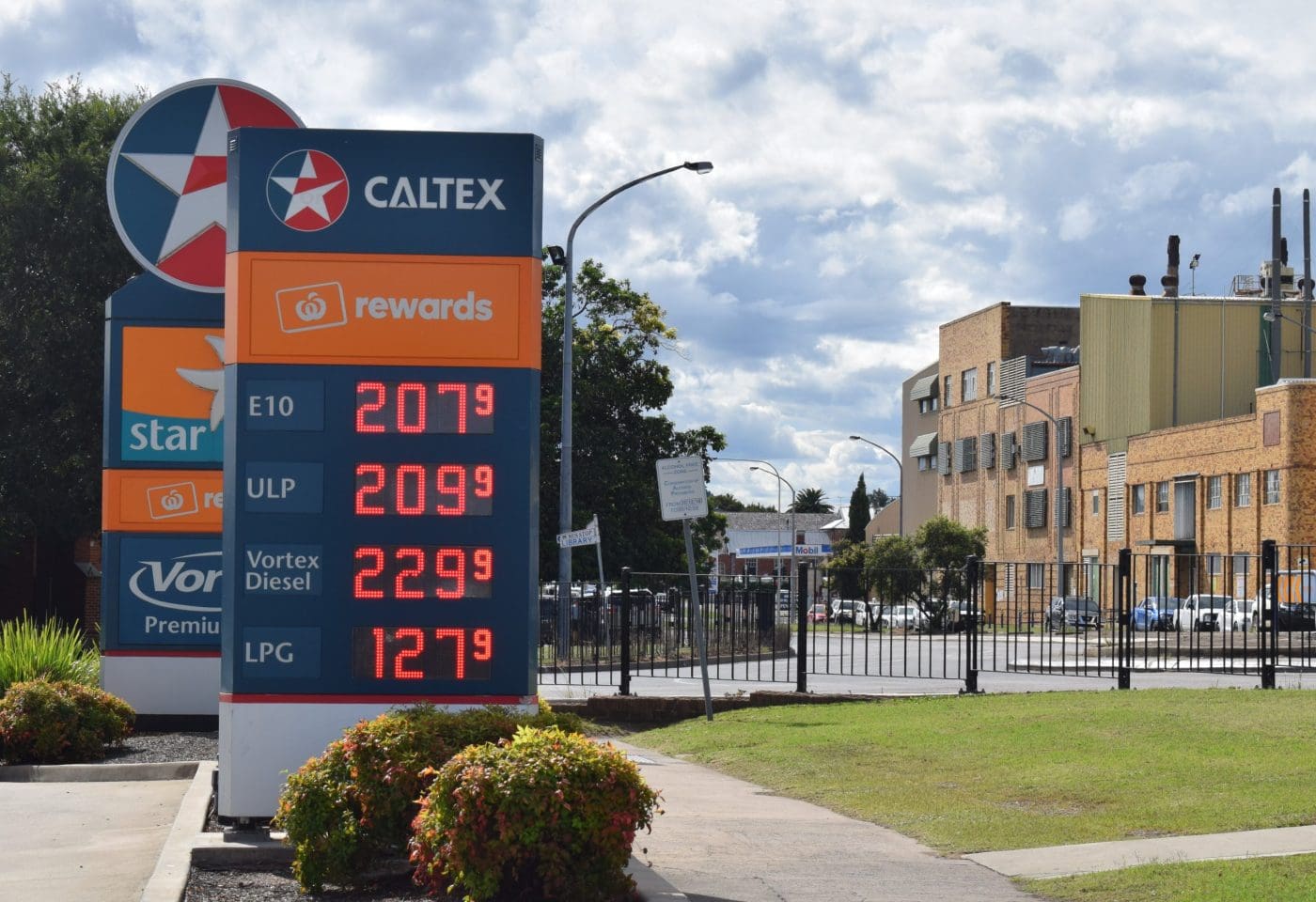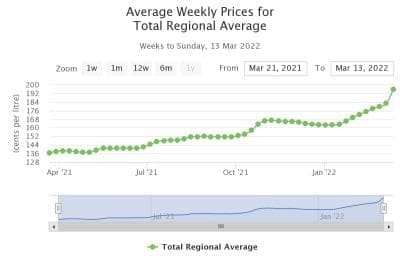
Fuel prices are expected to stay high in the short-term, with oil production ramping up across the world.
CONCERNS about the cost of living in Australia have been switched to high flow this month as petrol bowsers across the country ticked over the $2/litre mark.
Rising inflation has been an issue for businesses and households for a long time, but the latest burst, spurred on by the Russian invasion of Ukraine, has raised plenty of discussion about it. The Federal Government has been under pressure to cut its fuel excise and there’s even been talk of reducing the tax on tap beer.
While the record fuel prices will have a direct impact on the agricultural industry, there is concern the renewed rise in inflation will have an indirect impact on the consumer’s willingness to spend on red meat.
Rabobank analyst Angus Gidley-Baird said the ramifications from the Russia/Ukraine situation could contribute to consumer uncertainty.

Rabobank analyst Angus Gidley-Baird
“Australia’s at the top-end of its nominal and real beef price at the moment, the US is in the same predicament and the consumer has partly been the reason for that,” Mr Gidley-Baird said.
“When the cost of living goes up, without a compensatory wage increase to offset it, they’re going to have to take spending from some area and generally the higher priced items are cut from the budget.
“Red meat is fortunate because it has products like mince, which means the product can be consumed at a different price point – but it means you the ability to get some additional value out of a carcase.”
Mr Gidley-Baird said it was likely restaurants coming back into the market after COVID uncertainty would have to increase their prices.
“You have retail beef prices elevated at the moment and for food service to come back into the market and build up stocks in its supply chain it will have to compete for the product on a wholesale level,” he said.
“What might have been in 2019 a $40 steak, might now be a $50 or $60 steak. But it could also mean the demand for red meat goes down and you have those prices balance out.”
Cost of living to remain high
While the Federal Government has been under pressure to use policy to alleviate the cost of living, especially by lowering the fuel excise, general costs are still an issue.

Click to enlarge. Retail petrol and diesel prices have been increasing for most of last year, with a spike this month.
The price of fuel, which is based off the price of oil, was facing upward pressure before the Ukraine war. The International Energy Agency (IEA) put that down to oil producing countries, Russia as well as the Middle East, US and Canada, struggling to ramp production as the world came out of COVID lockdowns.
Countries outside Russia have ramped up production at the start of this year, which is expected to continue in the coming months with new projects and US bringing more online. Despite the tensions in Europe, is forecasting the market to move to a surplus of oil later this year.
In the meantime, the transport industry says it will have to increase trucking prices which could flow on to other factors in the cost of living.
Mr Gidley-Baird said the consumer response was going to be hard to pick.
“COVID affectively changed the rule book on a lot these things,” he said.
“To a certain extent, the consumer has been the reason prices have gone up. But we’re now in a cost push where we’re telling the consumer they are going to have to pay more and I don’t think we have tested that consumer yet.”
